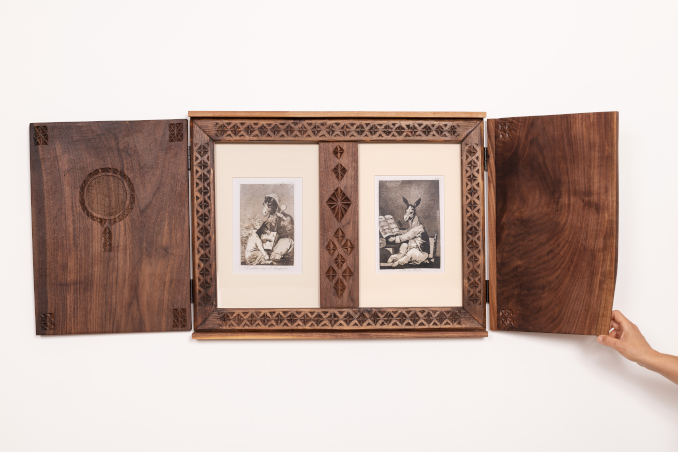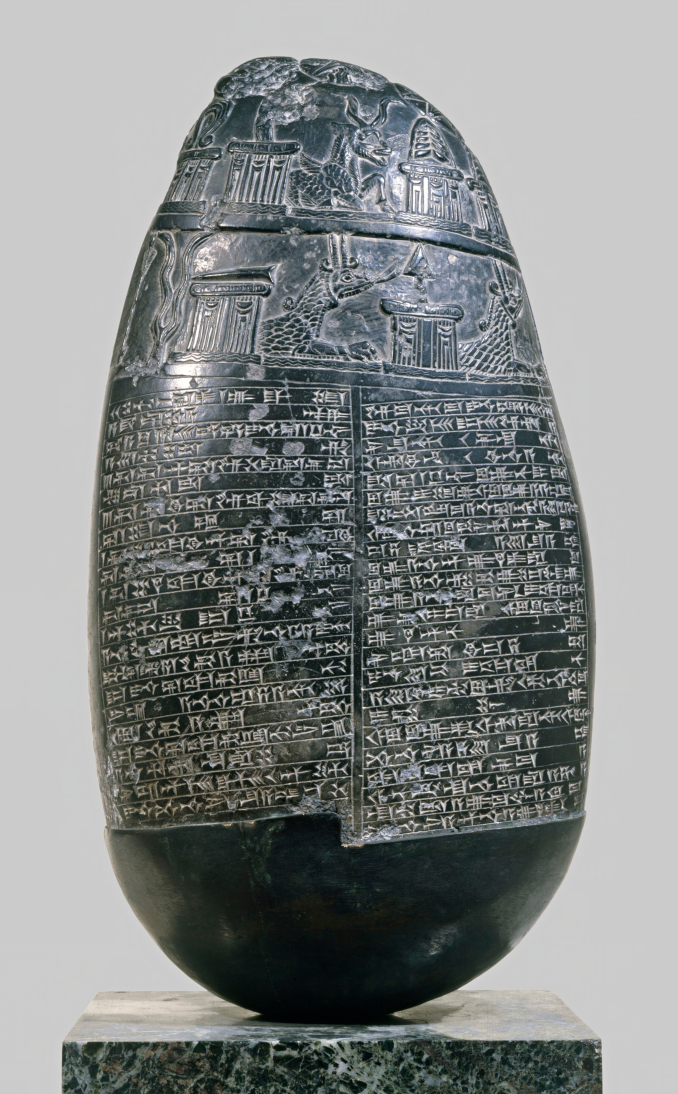Food for the Soul: California Reopenings. Back to Museums Part 2

Serge Attukwei Clottey. The Wishing Well. 2021 installation at James O. Jessie Desert Highland Unity Center in Palm Springs. Photo: Nina Heyn.
By Nina Heyn – Your Culture Scout
California is one of the last states in the U.S. to have post-Covid-19 openings of entertainment and art venues, with many cultural events (such as the annual outdoor Coachella music festival) being rescheduled for 2022. However, with open-air events in Palm Springs and indoor reopenings at the Los Angeles County Museum of Art and Getty Villa Museum, the art scene is slowly coming back to Southern California.
In and around the desert town of Palm Springs, an outdoor cultural event called Desert X has kickstarted renewed access to artwork in this part of the state. Palm Springs, together with four other nearby communities, is a prime destination for artists and designers, as well as Los Angeles area retirees, the LGBT community, afficionados of mid-century design, architecture buffs, and tourists in search of sun, heat, ambitious food, and sophisticated boutiques.
The third annual edition of Desert X, which involves installations of modern art in open air, is designed as a sort of artistic pilgrimage. Viewers can drive from one desert or park site to another to view the large-scale installations. It is a perfect pandemic cultural event, since there is no contact with other viewers or staff but you can still experience art. The festival’s desert location allows a display of large, experiential artworks that can be visited, touched, filmed, or walked around.
One of the most interesting Desert X exhibits is the one by Ghanaian artist Serge Attukwei Clottey, who uses yellow plastic jerrycans to create sculptures, installations, and performances that make artistic statements about colonialism, resource scarcity, and environmental inequality. The installation called The Wishing Well consists of large cubes woven from pieces of distinctive plastic cans used in Ghana to carry water, and which these days litter the countryside there. The title refers to wells to which many people all over the world still have to travel in order to get fresh water.

Alicja Kwade. ParaPivot (sempiternal clouds). 2021 installation in Sky Valley. Photo: Nina Heyn.
From another part of the world comes an installation by Alicja Kwade, a Germany-based artist originally from Poland. Her ParaPivot (sempiternal clouds) is a construction of black metal frames from which hang sugar-white chunks of sharp-edged marble. The stone rocks can seem like clouds against the impossibly blue sky of the Coachella Valley or, if you change the angle of viewing, as perhaps pieces of glacier ice against the yellow desert. This is a sculpture which, placed on top of a windy hill, is to be experienced by climbing to and around it. Kwade’s similar sculptures with this design have been exhibited in many places in the world, but this one—with its brilliant white marble placed on a huge hill in the middle of a desert landscape of emptiness for miles—is particularly powerful.

John Baldessari. Beethoven’s Trumpet (With Ear) Opus #131 (2007). Gift of Margo Leavin, © The Estate of John Baldessari, image courtesy of The Estate of John Baldessari.
Indoors, the Los Angeles County Museum of Art (LACMA) is one of the first art museums to reopen in Southern California. While it is undergoing a three-year renovation of the older part of its complex, the reduced space of the newer modern art pavilions offers limited square footage to display art. However, necessity can give birth to creativity. Many of the museum’s treasures now find themselves in interesting juxtapositions in the current “Not I-Throwing Voices”exhibition, which features over 200 objects spanning a 3500-year period.
The exhibition explores artistic representations of voice and sound, and especially ventriloquism. The questions of where the sound or voice comes from and how artists have explored science or performance have been expressed in extremely disparate art objects. In contemporary art, one example is a sculpture or piece of wall art by John Baldessari. His Beethoven’s Trumpet (With Ear) Opus #131 is a huge metal trumpet (the composer famously used an ear trumpet as his auditory abilities diminished) that is sticking out from a huge plaster ear—a very “in your face” reminder that the ability to hear sounds should not be taken for granted.
Sometimes in the LACMA collection, the old gets a new frame—literally. One of the exhibition’s displays is a collection of Goya’s Los Caprichos drawings, which have been encased in hand-carved frames by artists Patricia Fernández (and her grandfather José Luis Carcedo). Goya’s famous satirical sketches get a new look and context.

Patricia Fernández (with José Luis Carcedo, her grandfather). Untitled (Frames for Goya) (2005/2020). Courtesy of the artist, commissioned by the Los Angeles County Museum of Art, © Patricia Fernández. Photo © Ian James AND Francisco de Goya, Si sabrá mas el discipulo? (Might not the pupil know more?) from the portfolio Los Caprichos (1799). Los Angeles County Museum of Art, Paul Rodman Mabury Trust Fund, photo © Museum Associates/LACMA AND Francisco de Goya, Asta su abuelo (And so was his grandfather) from the portfolio Los Caprichos (1799). Los Angeles County Museum of Art, Paul Rodman Mabury Trust Fund, photo © Museum Associates/LACMA
The varied and fascinating art objects from LACMA’s vault have gained, thanks to this themed exhibition, a new context in which to be displayed. Such is the case for this charming genre scene by Jean-Baptiste-Siméon Chardin. The 18th-century artist is famous for his still lifes and paintings of domestic scenes. Soap Bubbles is a picture of a youth, blowing a soap bubble as the title promises. This could be a moment of childish fun as perceived by a small child peeking over his elbow, but the youth’s serious expression suggests that perhaps he is doing some experiments—an activity that was fashionable during the Enlightenment. Or perhaps Chardin is evoking Dutch Baroque paintings on the same theme that were metaphors for the transitory nature of life. There are three versions of this painting, but the other two are on the East Coast, so this is a chance for LA audiences to experience this famous and beautiful Chardin canvas.

Jean-Baptiste-Siméon Chardin. Soap Bubbles (after 1739). Los Angeles County Museum of Art, gift of The Ahmanson Foundation. Photo © Museum Associates/LACMA.
The Getty Villa Museum celebrated its reopening on April 21 with a relaunch of an exhibition entitled Mesopotamia- Civilization Begins that was originally slated for a 2020 run. It is the most important cultural exhibition about the Mesopotamian region ever assembled on the West Coast. Exhibits derive from the Gettys’ own collection, the Louvre, and the Met. The collection includes objects from Sumer—the earliest known civilization in the region—as well as from the Akkadian and Babylonian empires, going all the way to the period of Alexander the Great.

Cylinder Seal with King Etana Ascending to Heaven, shell (2340-2150 BC). Musée du Louvre, Départment des Antiquités Orientales. Photo: Musée du Louvre, dist. RMN-Grand Palais/Philippe Fuzeau/Art Resource NY VEX 2020.1.56, courtesy The Getty Center.
The Getty Villa exhibition is divided into three sections. “First Cities” tells the story of the first large settlements in human history that emerged in ancient Sumer in the fourth millennium BC. The “First Writing” section presents examples of cuneiform pictographs in clay and stone as well as the exquisite seals that were ubiquitous in the Mesopotamian cultures. The stone seal above comes from the golden age of Akkadian kingdoms, when seals served as signatures but were also works of art, depicting myths as well as scenes from daily life—hunting, warfare, animals, and domestic scenes.

Land Grant Stele (Caillou Michaux) (1100-1083 BC). Bibliothèque nationale de France. Photo: BnF. VEX 2020.1.1. Courtesy The Getty Center.
The third section of the exhibition, entitled “First Kings,” examines the kingdoms of Mesopotamia and its rulers, whose obligations included leading soldiers into battle, ensuring the gods’ favors through offerings and temple building, maintaining the city’s walls and canals, and creating and enacting laws (Hammurabi’s Codex, still relevant in legislatures, comes from Babylon). The region of Mesopotamia was the cradle and center of civilization for over 3000 years, leaving behind fascinating documents and artworks.
Desert X 2021 opened in March and will run through May. The LACMA exhibition “Not I: Throwing Voices” is open through July 25, 2021. The Getty Villa Museum exhibition “Mesopotamia – Civilization Begins” is open through August 16.
